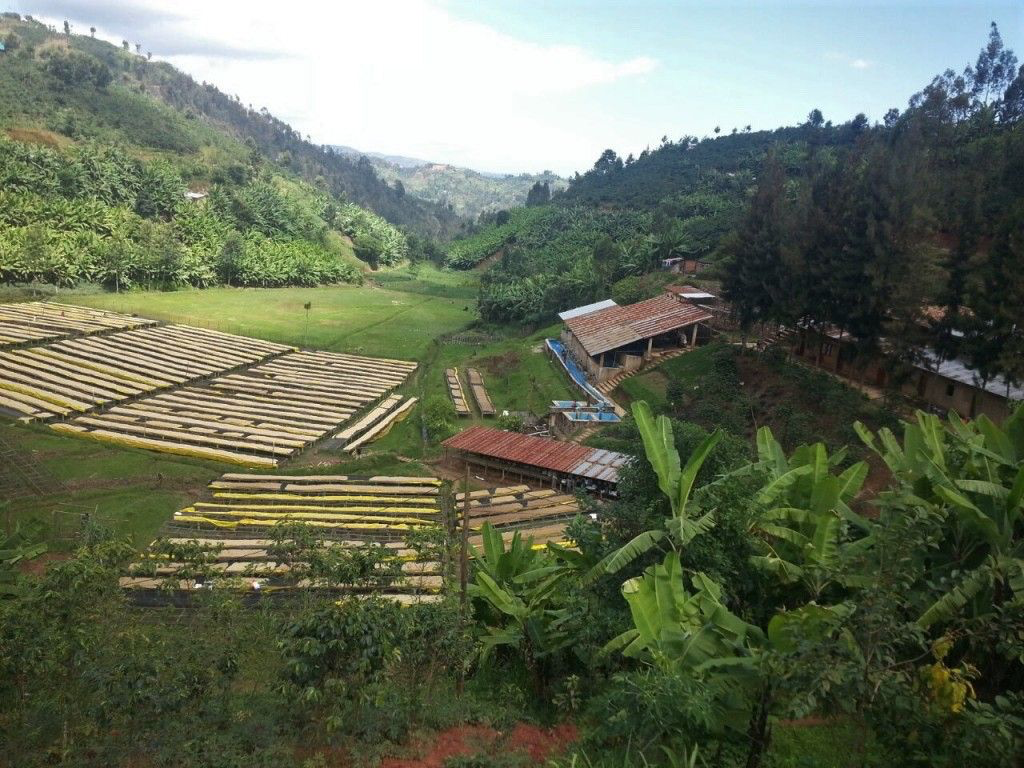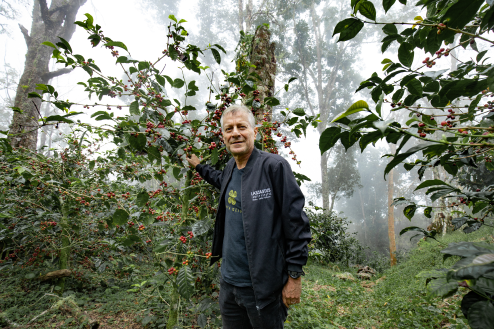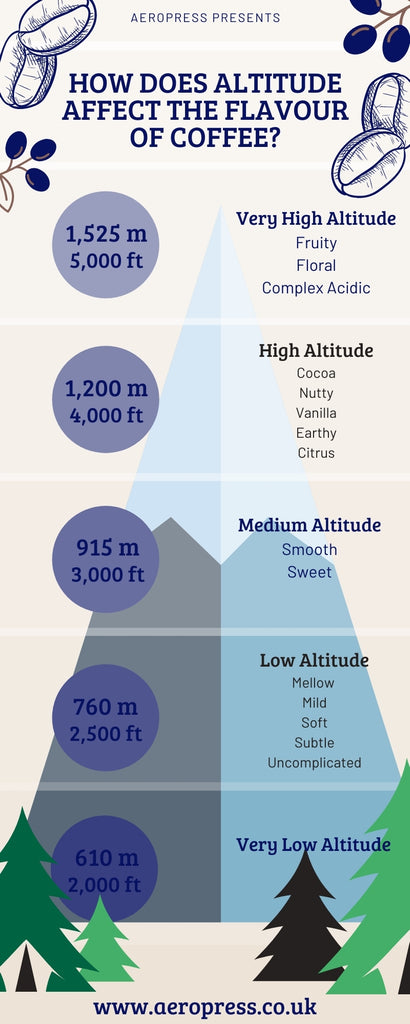
If you take a look at the diamond on your bag of Klatch coffee, such as our new Rwanda Kamina Washed, you’ll notice a few things. At the top, you’ll find the roast level, followed by the name of the coffee, and the flavor notes. In the next section, you’ll find three things: region, varietal, and altitude. Lastly, you’ll find the process of the coffee, whether that’s natural, honey, washed, or anaerobic. All of these factors (roast level, region, varietal, altitude, soil, process +more!) affect the flavor of your favorite Klatch.
What’s so important about altitude?
Coffees grown at a higher altitude (or elevation) means lower temperatures, which gives the coffee cherry an extended maturation process. The more time a coffee cherry (also known as a coffee seed) has to develop, the more nuanced its flavors are.
As CEO Heather shares, “The best coffees have to struggle to thrive. We source the very best coffees, which often means a tiny, exclusive lot at the top of the mountain.”

For example, our recent limited-release Mokkita made headlines after it received the highest price ever paid for a non-geisha varietal from anywhere in the world: $400/lb. The Best of Panama #1 Auction Winner was an anaerobic slow dry, natural process, grown at the high altitude of 1,500-1,600 M, which brought out the bright and floral aromatics of the coffee.
There are a multitude of variables to consider when it comes to what makes an excellent cup, and altitude is just one of the pieces of the puzzle.

Environment is key
Stepping back to take in the bigger picture for a minute, each coffee varietal has environmental conditions that are ideal for growth. The three main factors to consider are:
- soil
- climate
- altitude/elevation
Soil
Soil is a key component of terroir, which refers more to the environment as a whole. “Terroir” means “soil” or “land” in French, and you’ll often hear coffee producers and baristas talk about the terroir that a coffee is grown in.
The nutrients in the soil and its drainage both impact the coffee cherry. Volcanic soil is especially rich and ideal for growth.

Pictured: Wilford Lamastus, owner of the Lamastus Family Estates. His award-winning farm is surrounded by a cloudy rain forest and mist and fog during the dry season. High elevation, volcanic soils, and a unique microclimate all help the coffee beans thrive.
Image from: https://lamastusfamilyestates.auction/en/about
Climate
Climate factors such as temperature or rain have a huge impact on the harvest of a coffee. For example, rain during the harvest can be detrimental to a crop, but rain as coffee is developing is important. A colder temperature could slow down the development of the coffee cherry, producing a higher concentration of sugars. But if it’s too cold, the harvest won’t survive.
It’s often about balance, and it’s also a reminder that we’re dependent on the whims of mother nature and the impacts of climate change. Regardless of how experienced and skilled a coffee producer is, there are challenges outside of their control. The gift of a harvest is just that, a labor-intensive gift.
There is a whole journey that these coffee beans and the hands that cultivated them went on before they made their way to you.
Altitude or Elevation
There’s typically a “sweet spot” of altitude or elevation for each coffee varietal, and a higher altitude can produce sweeter, more nuanced flavors.
A higher altitude means lower temperatures, which allows for a slower maturation process. This creates a harder and denser bean, which helps preserve flavor. You might see SHB (Strictly Hard Bean) on some of our coffee descriptions, which is a term for coffee grown above 1,300 meters.

Paying Attention to Altitude Gives Insight
Noticing the altitude of a coffee can give insight into its complexity and flavor, as well as the journey and story behind your favorite coffee. This graphic from Aeropress UK gives insight into some of the flavor nuances you might expect.
In addition, paying attention to flavor notes, region, coffee seasons, varietal, and process will help guide you if you’re trying to find a coffee you love. There’s always something new to discover in the world of coffee.
Have you taken our Find Your Beans quiz yet? It’s a fast and easy way to find your new favorite Klatch.

